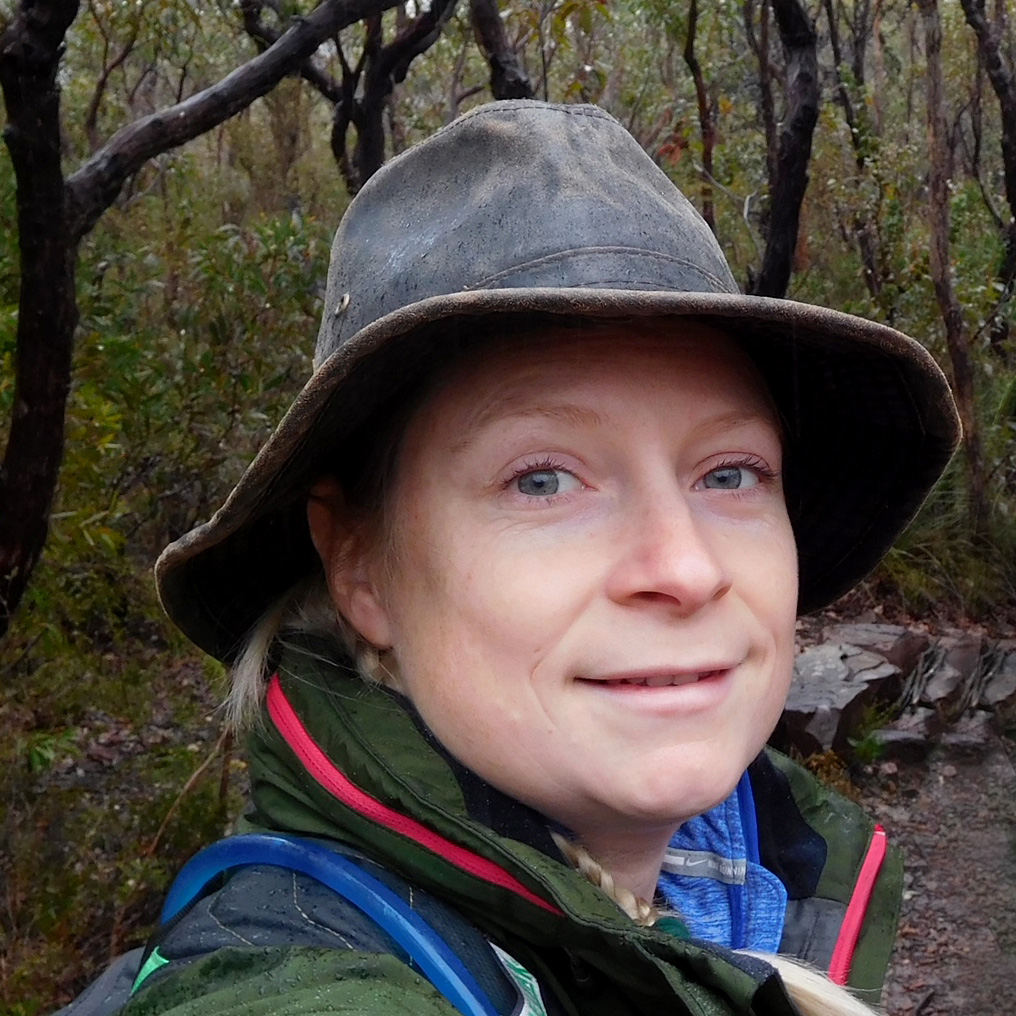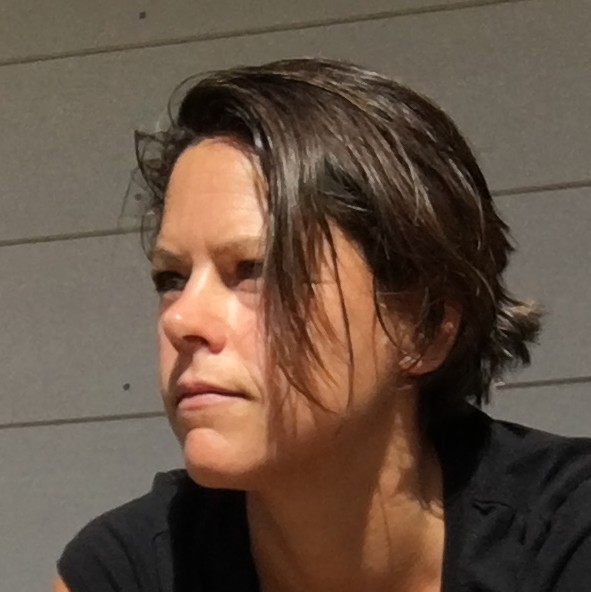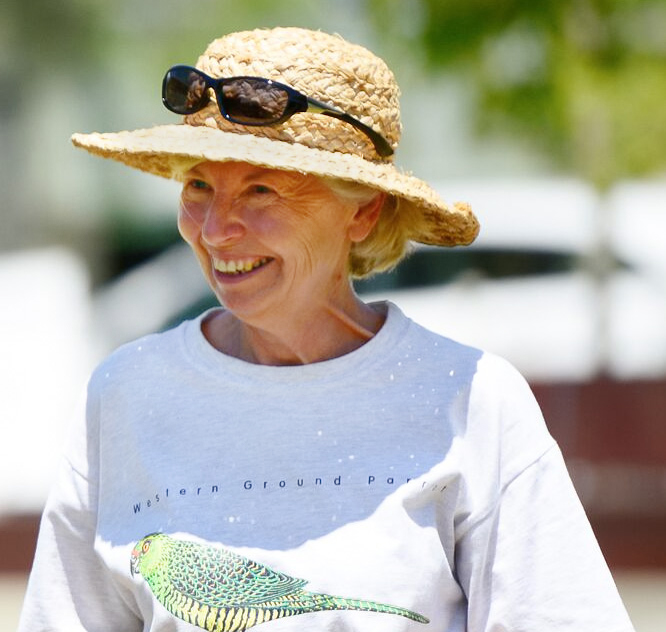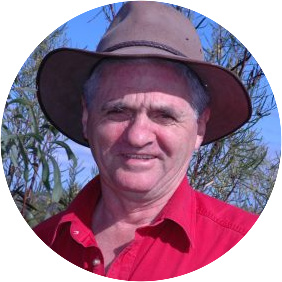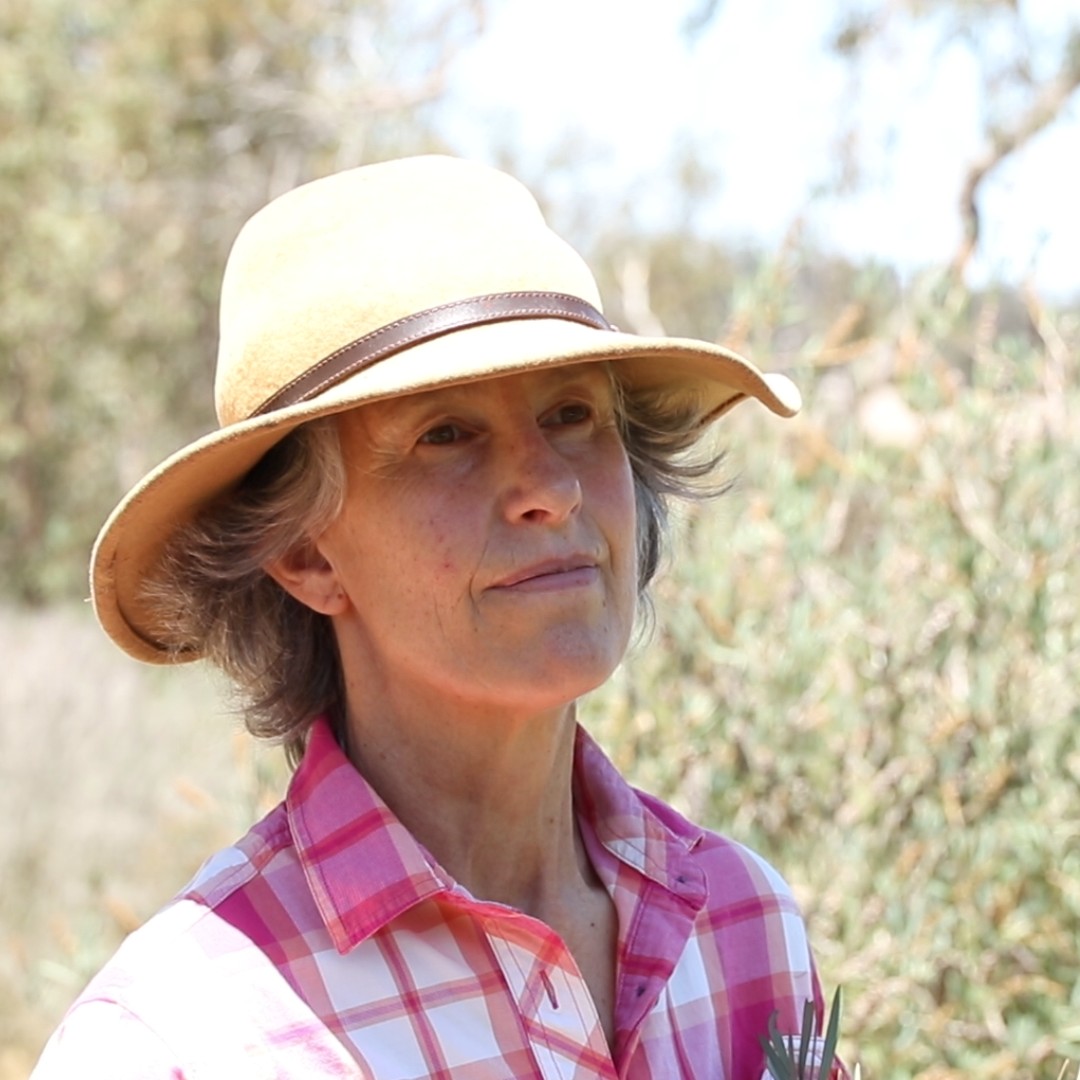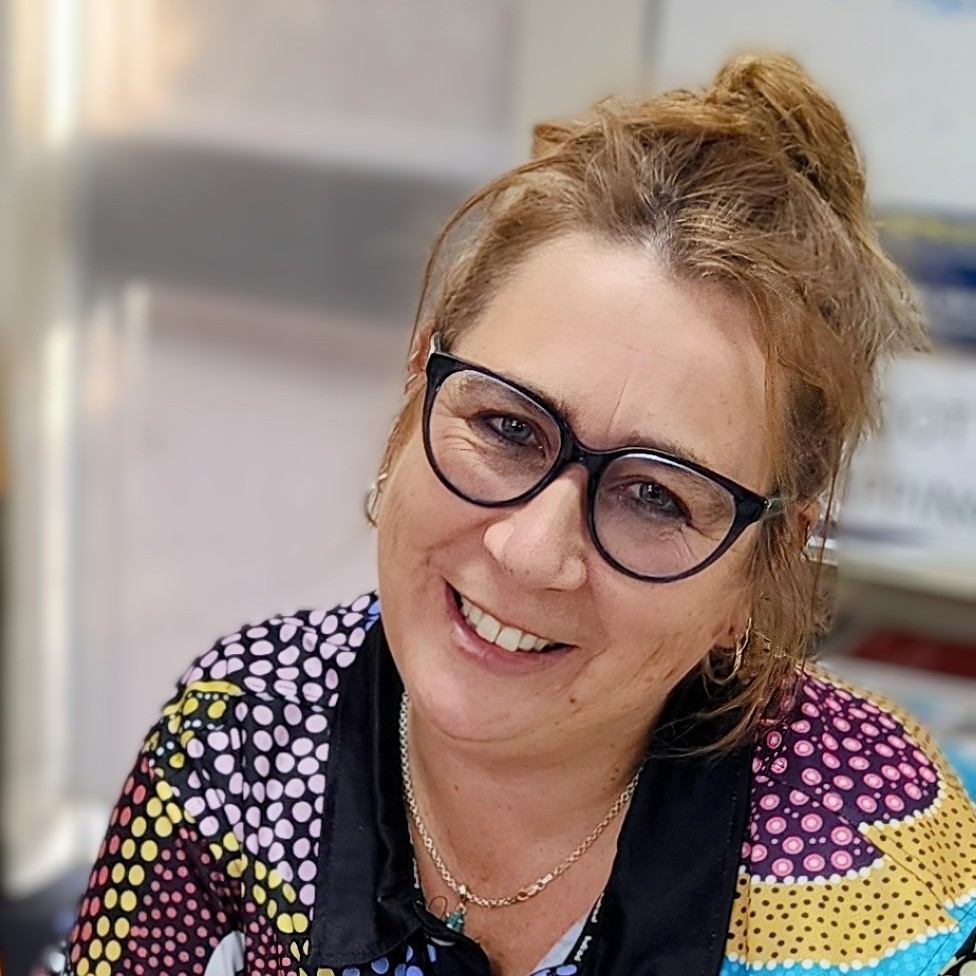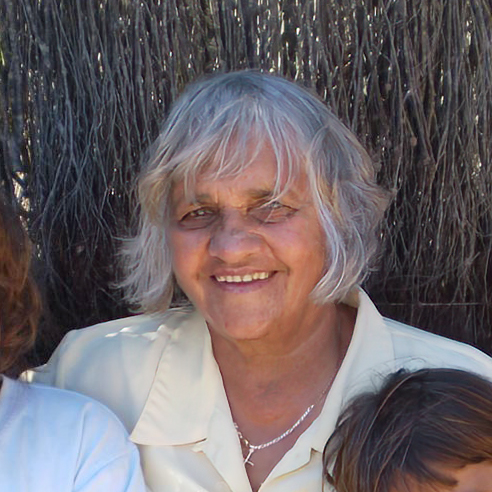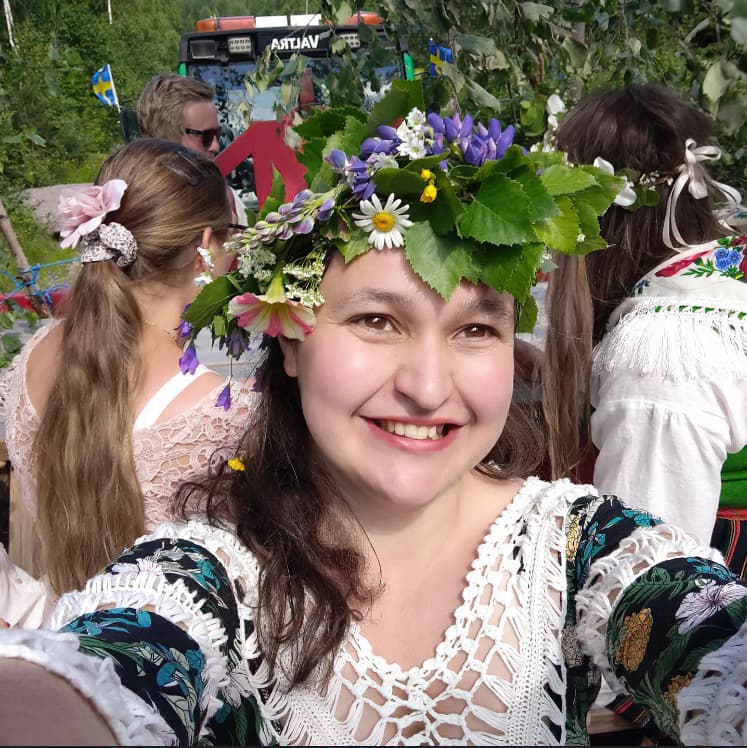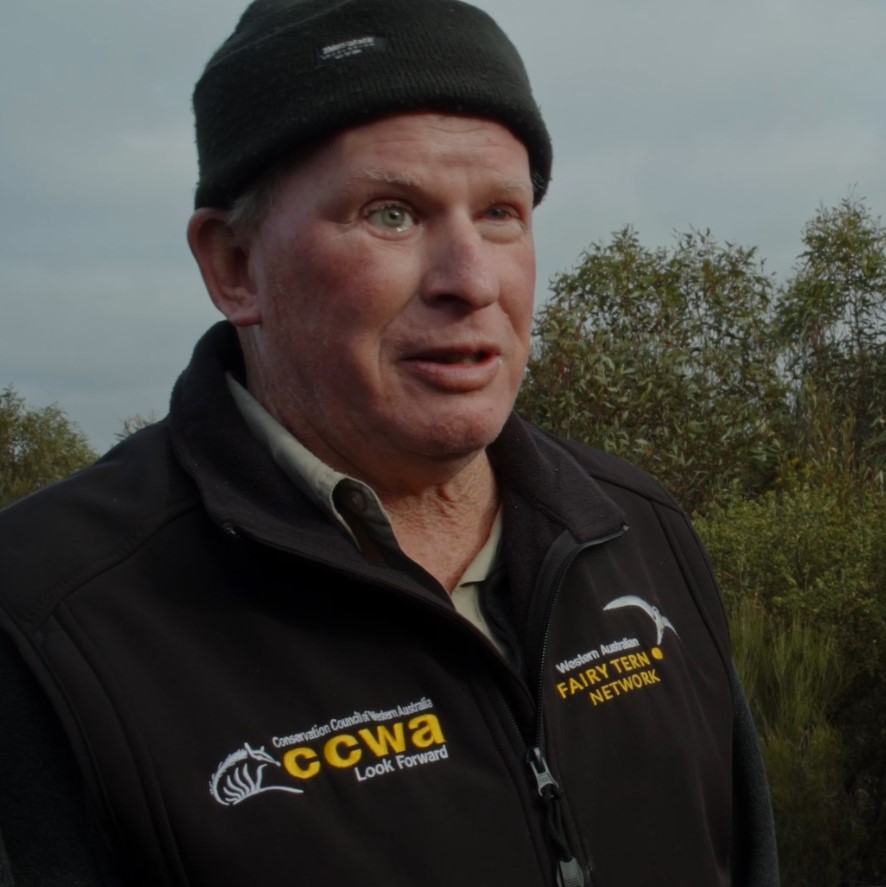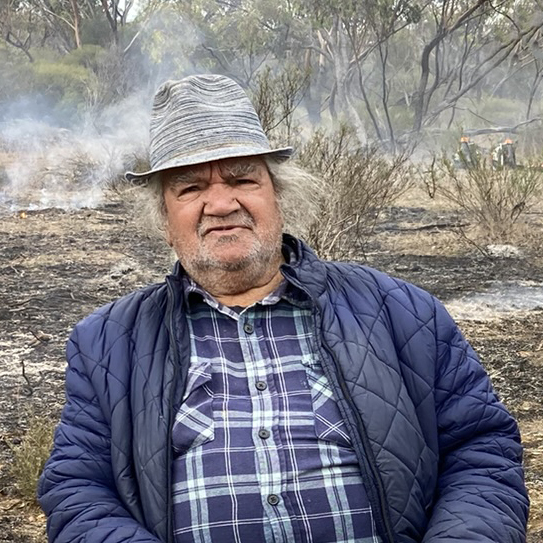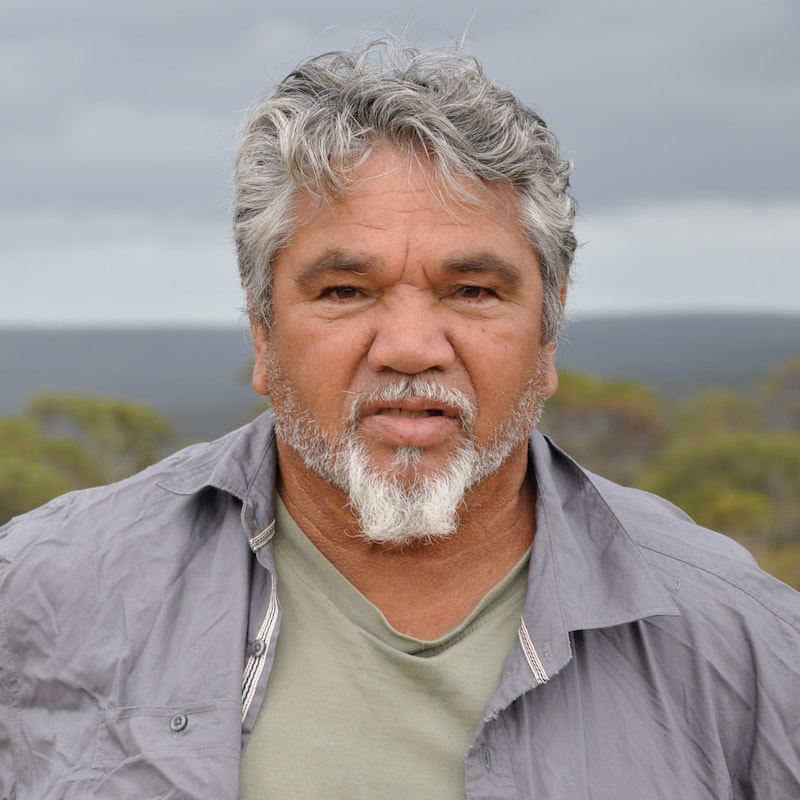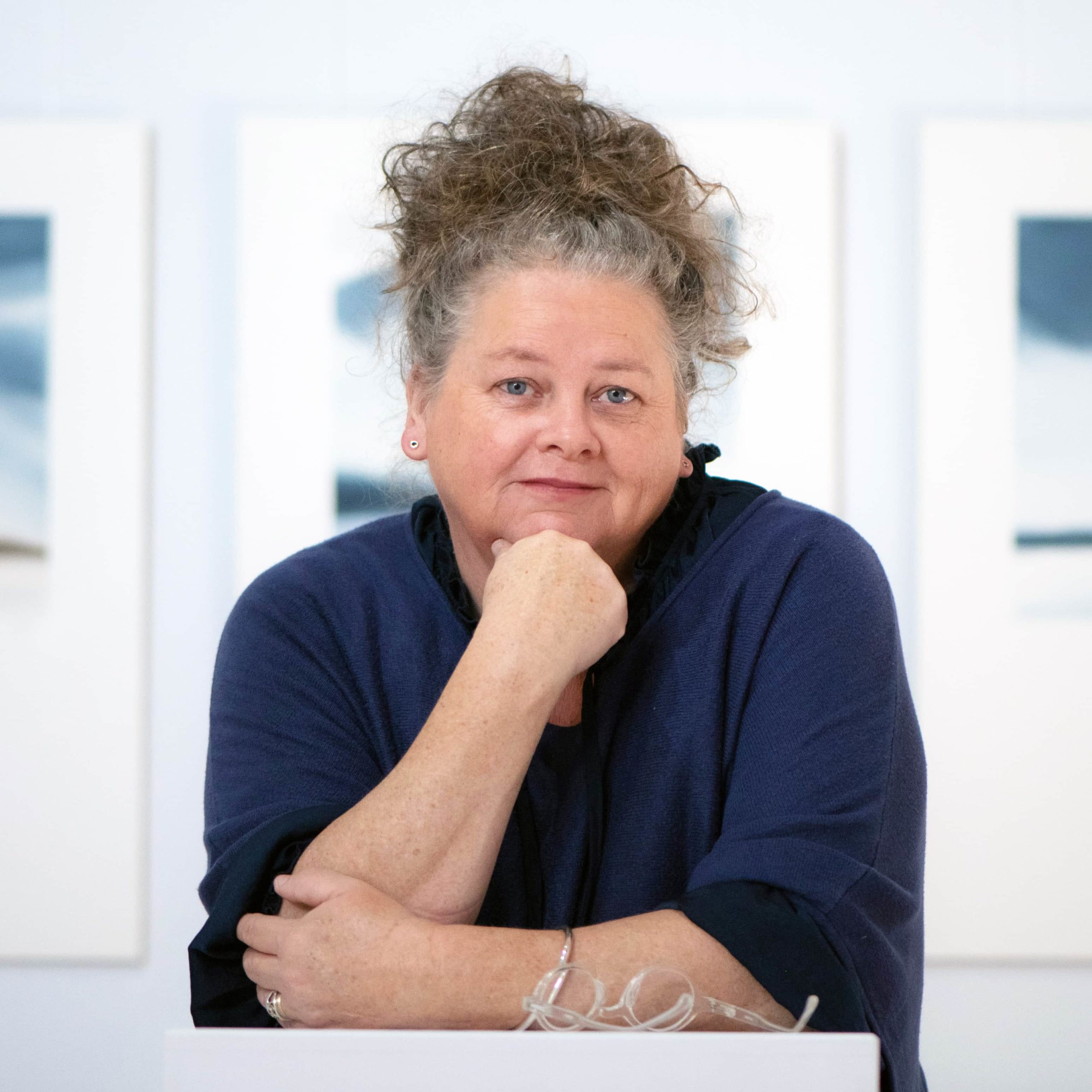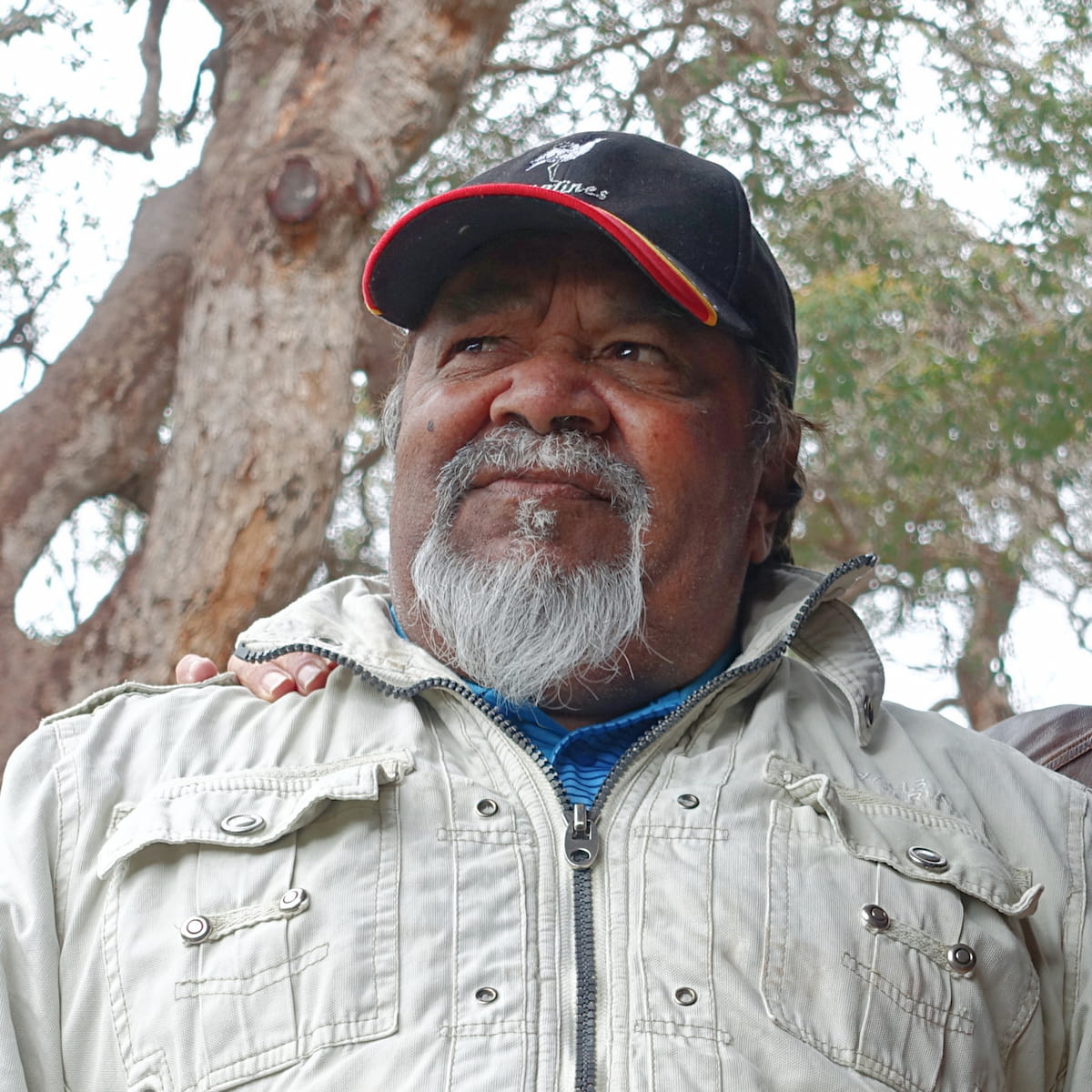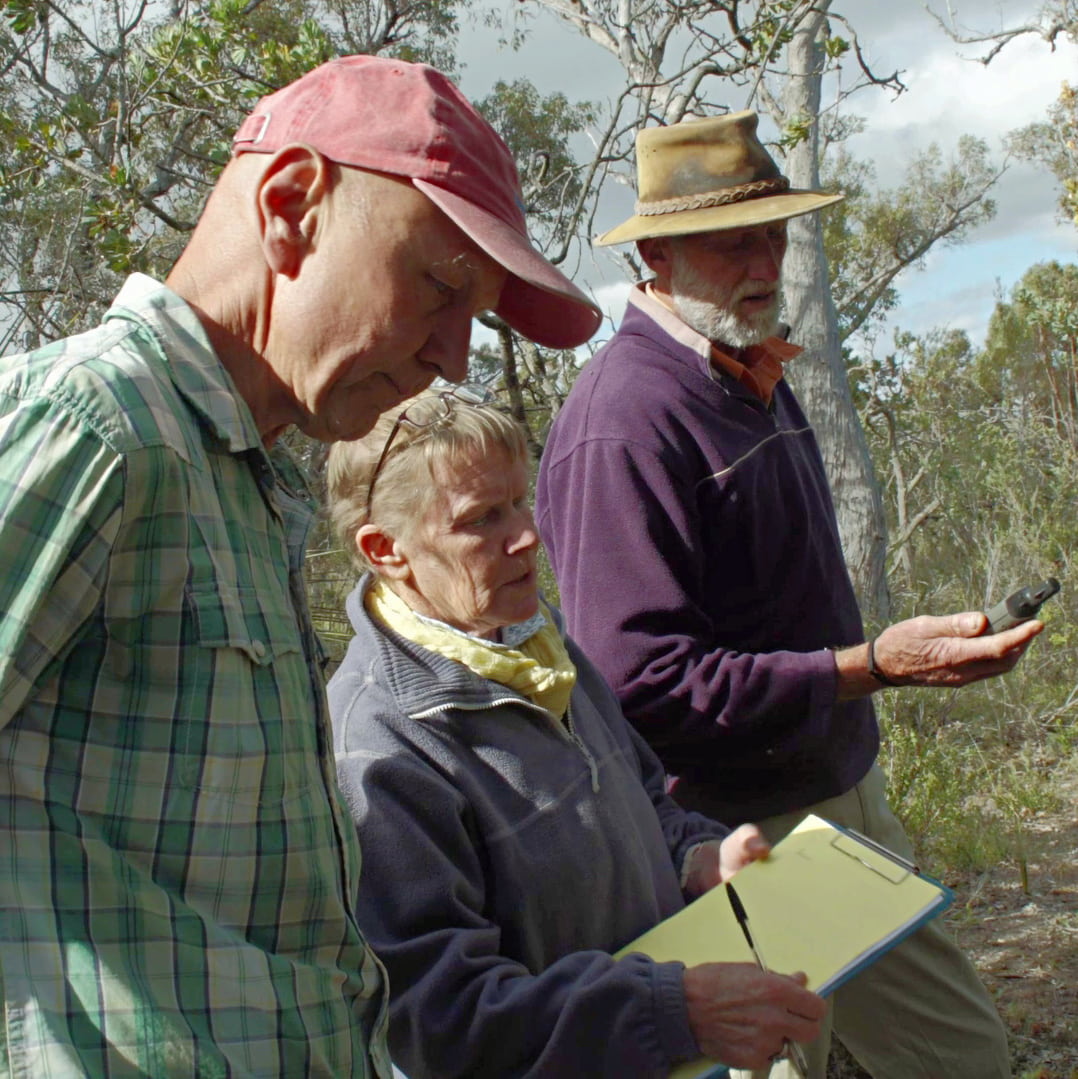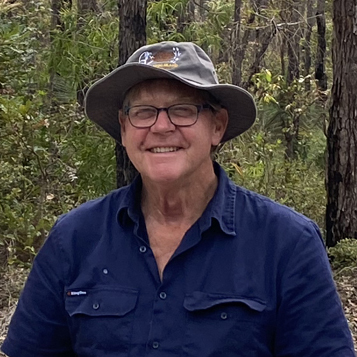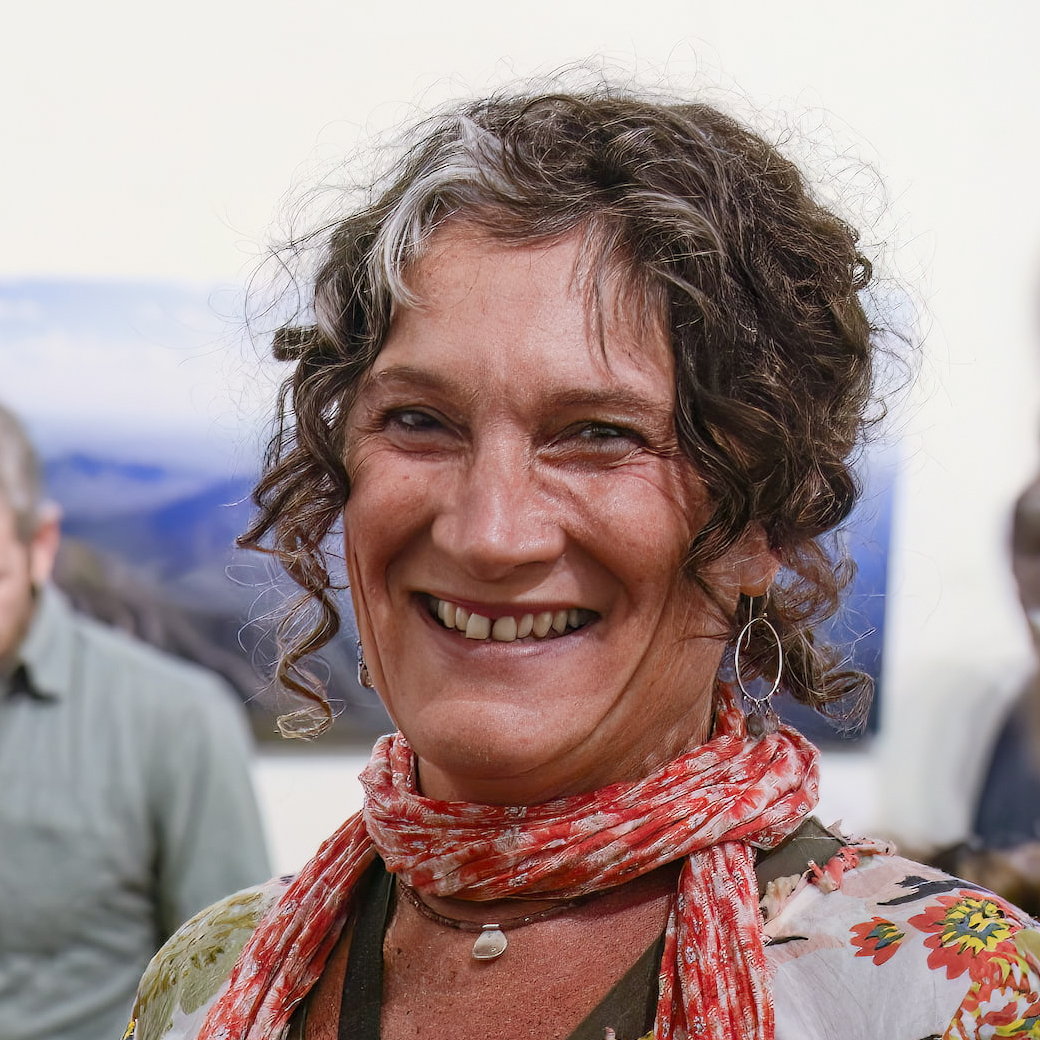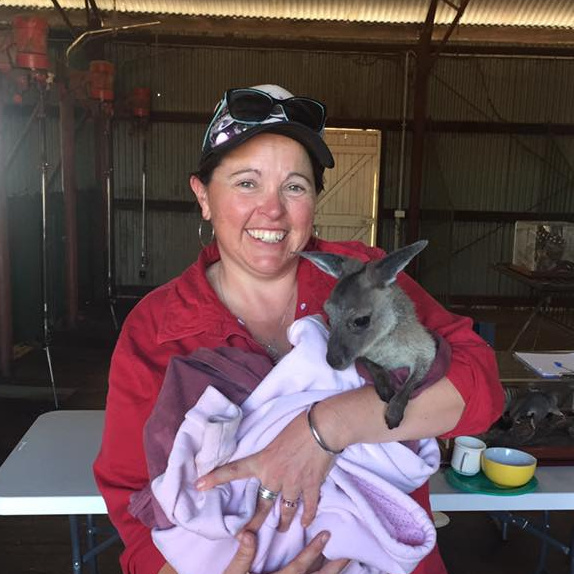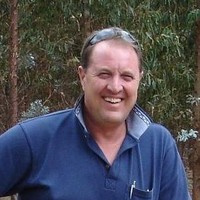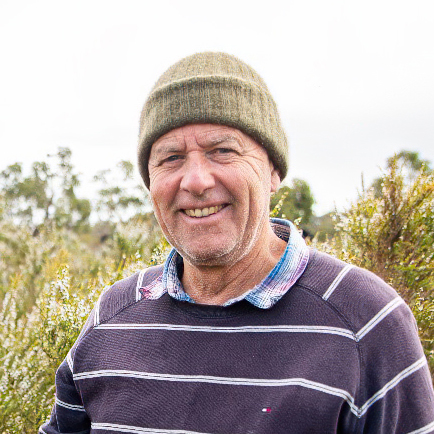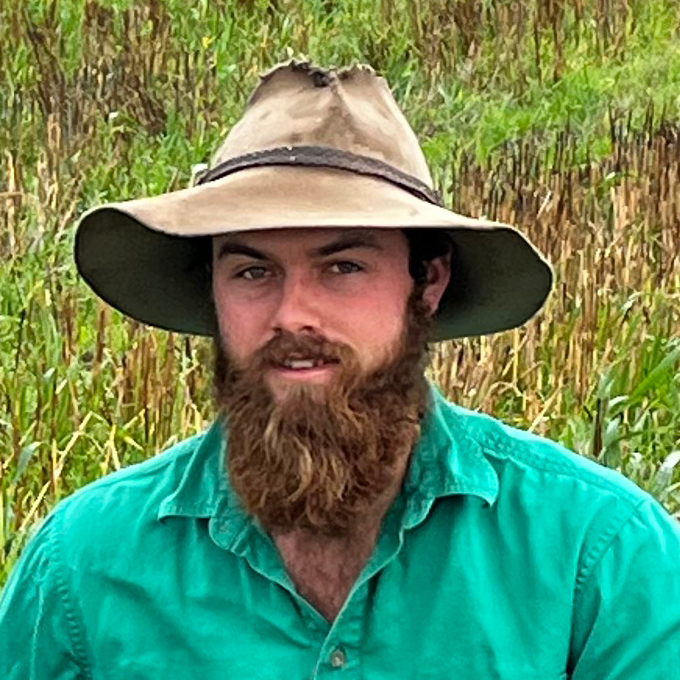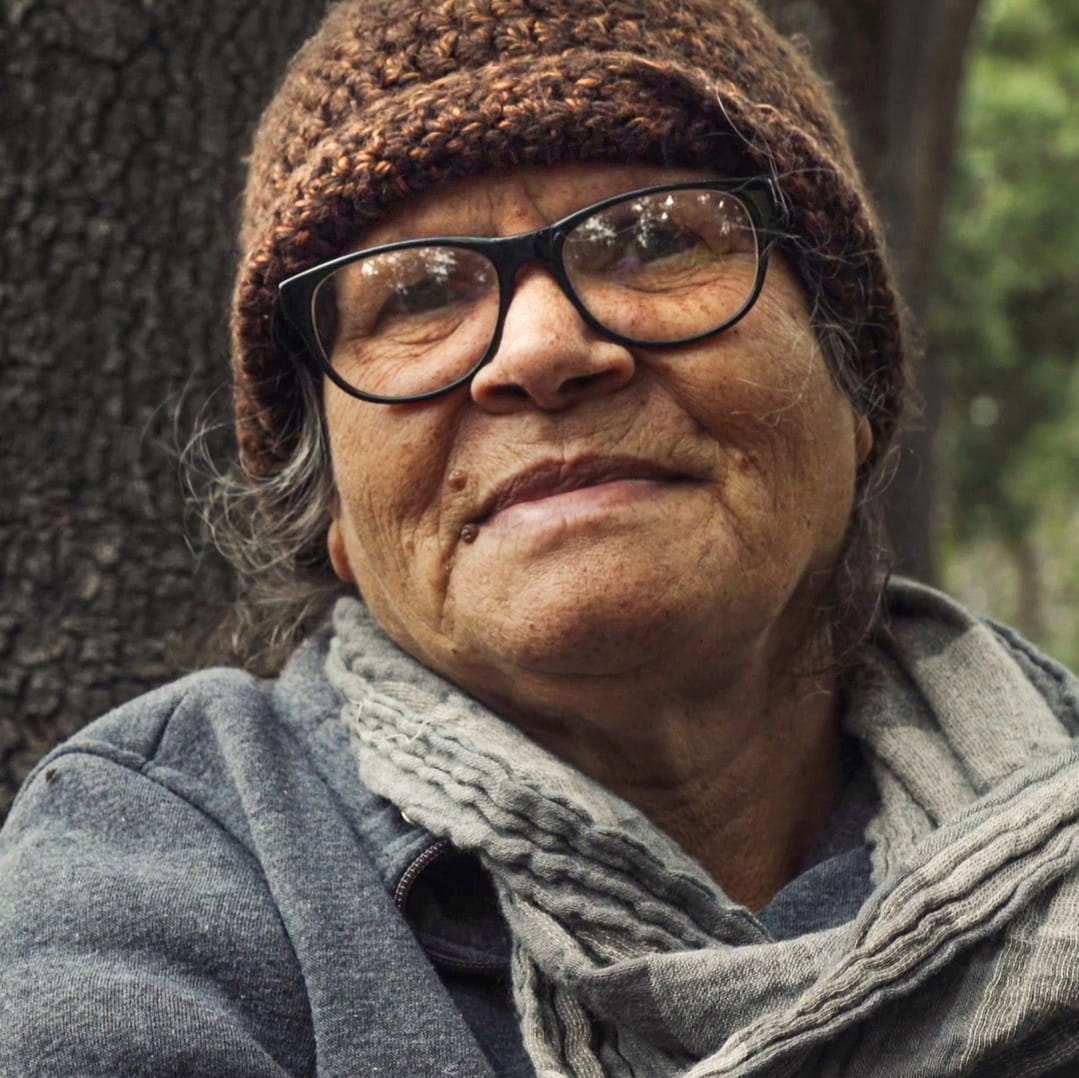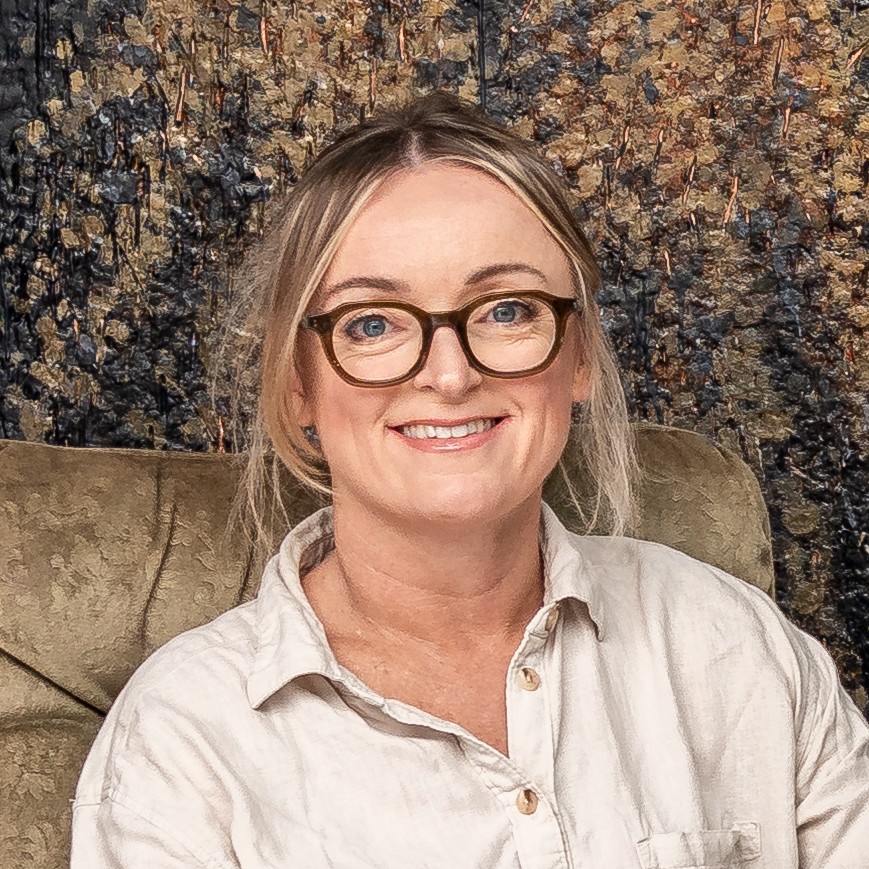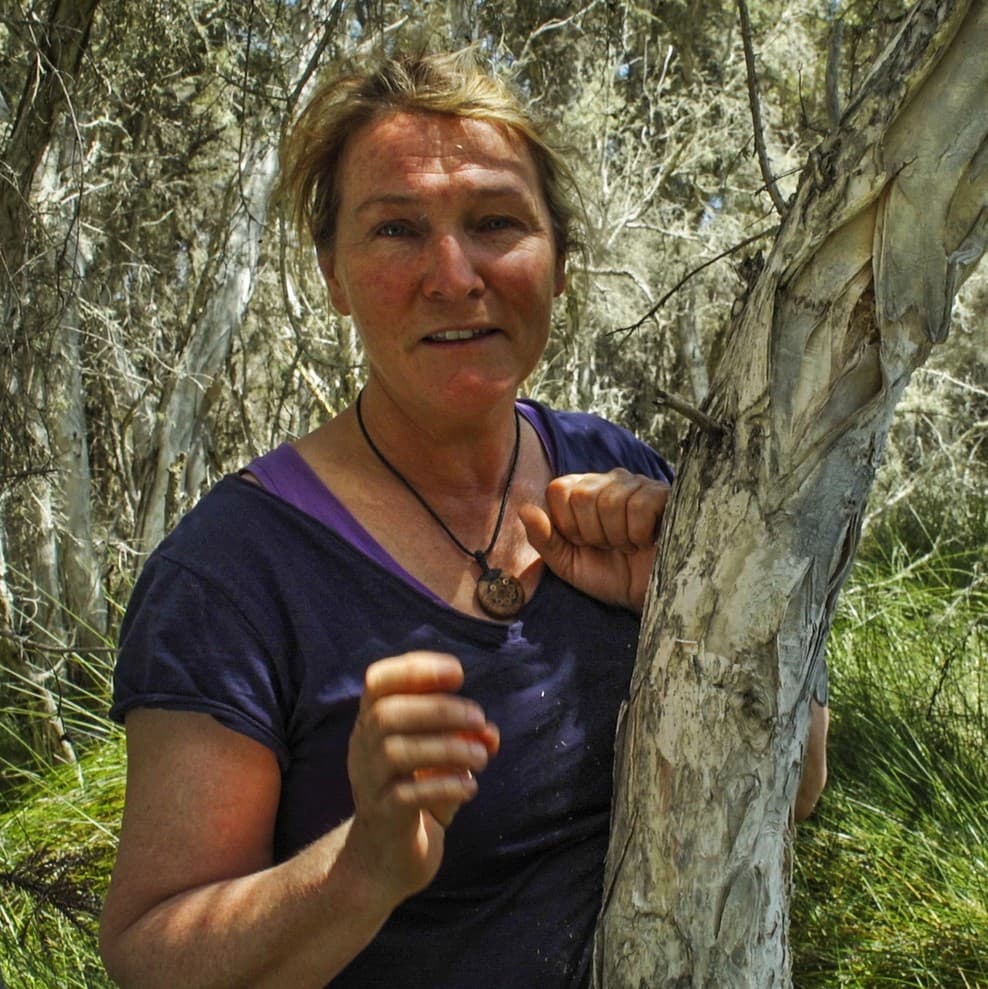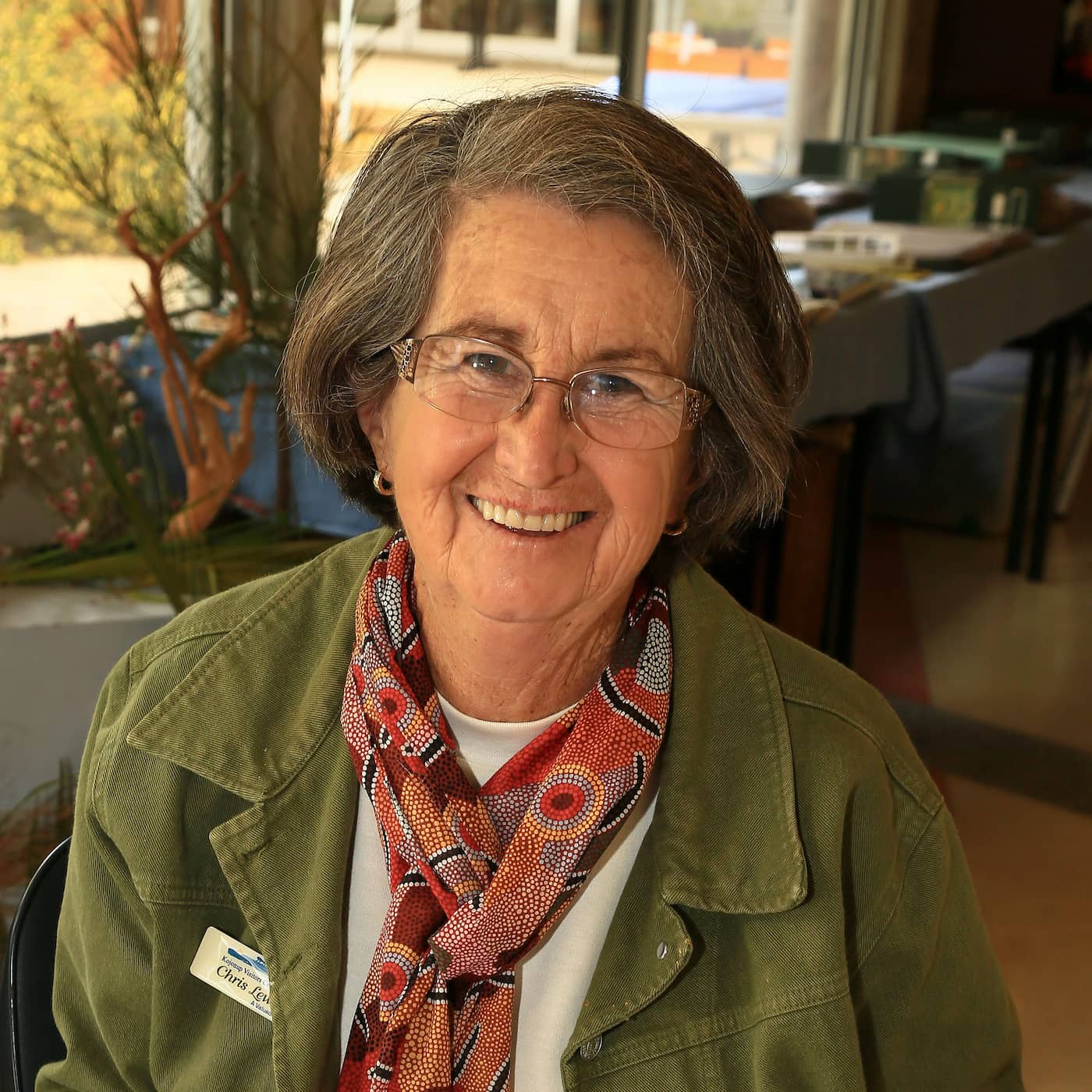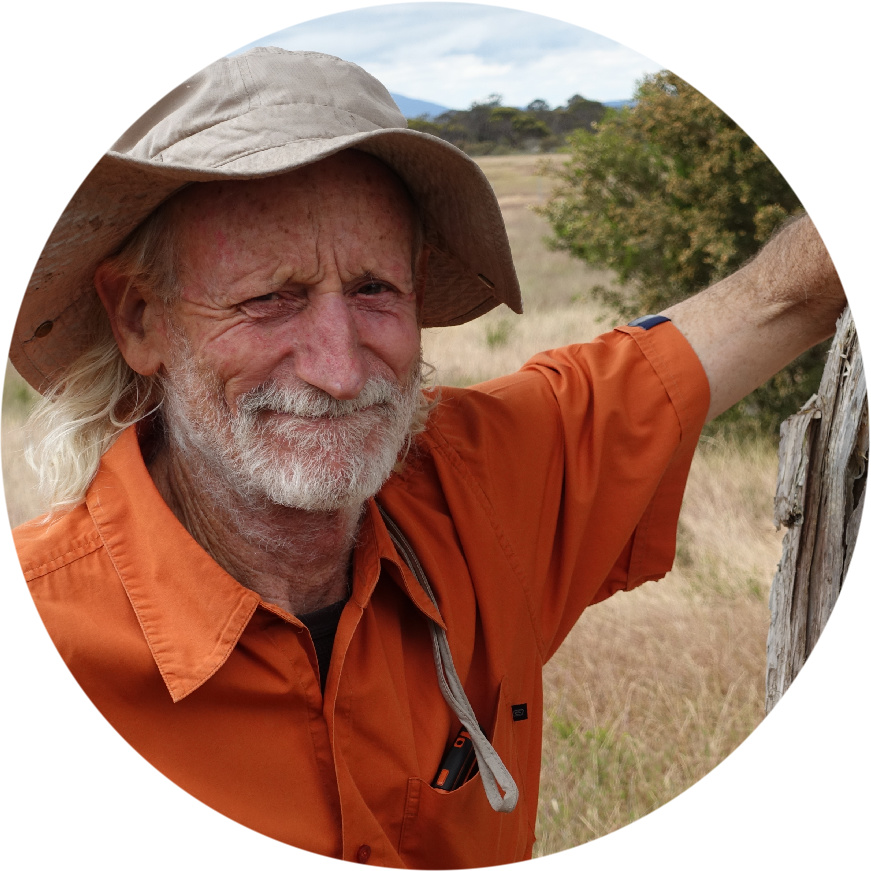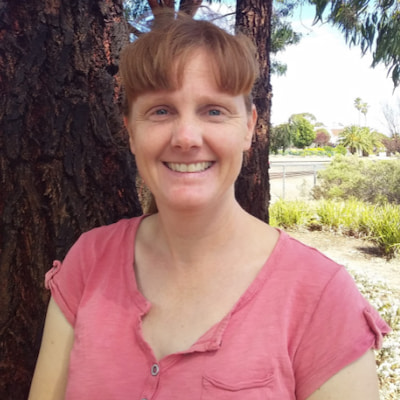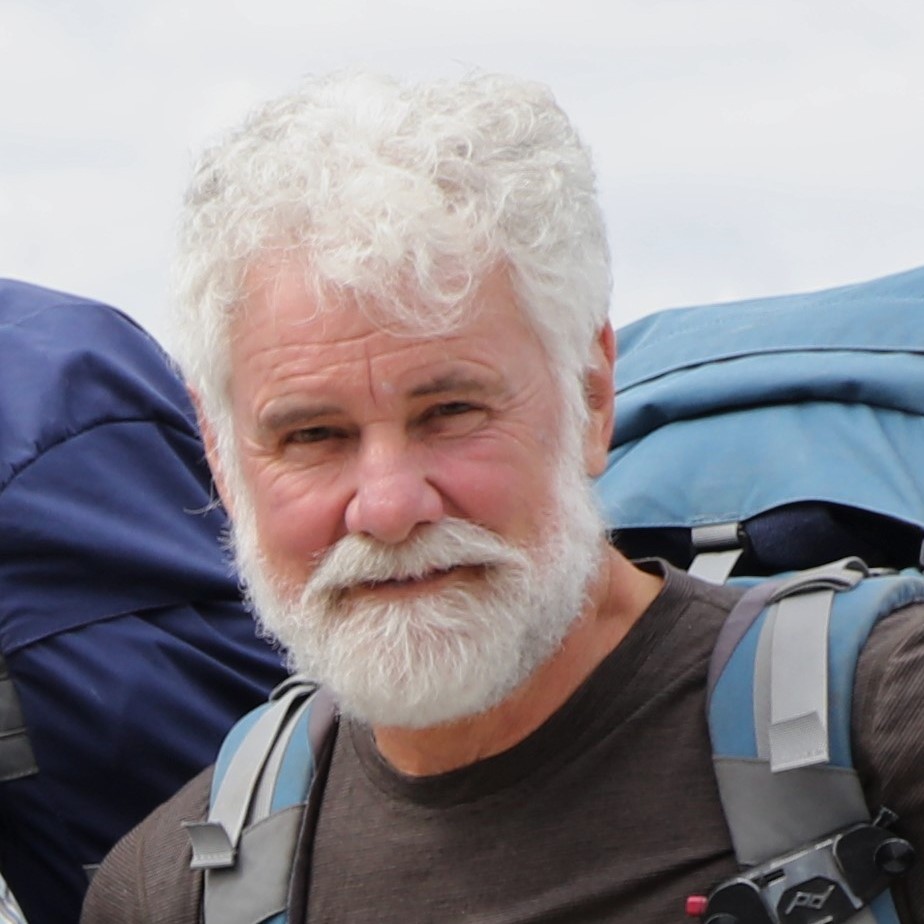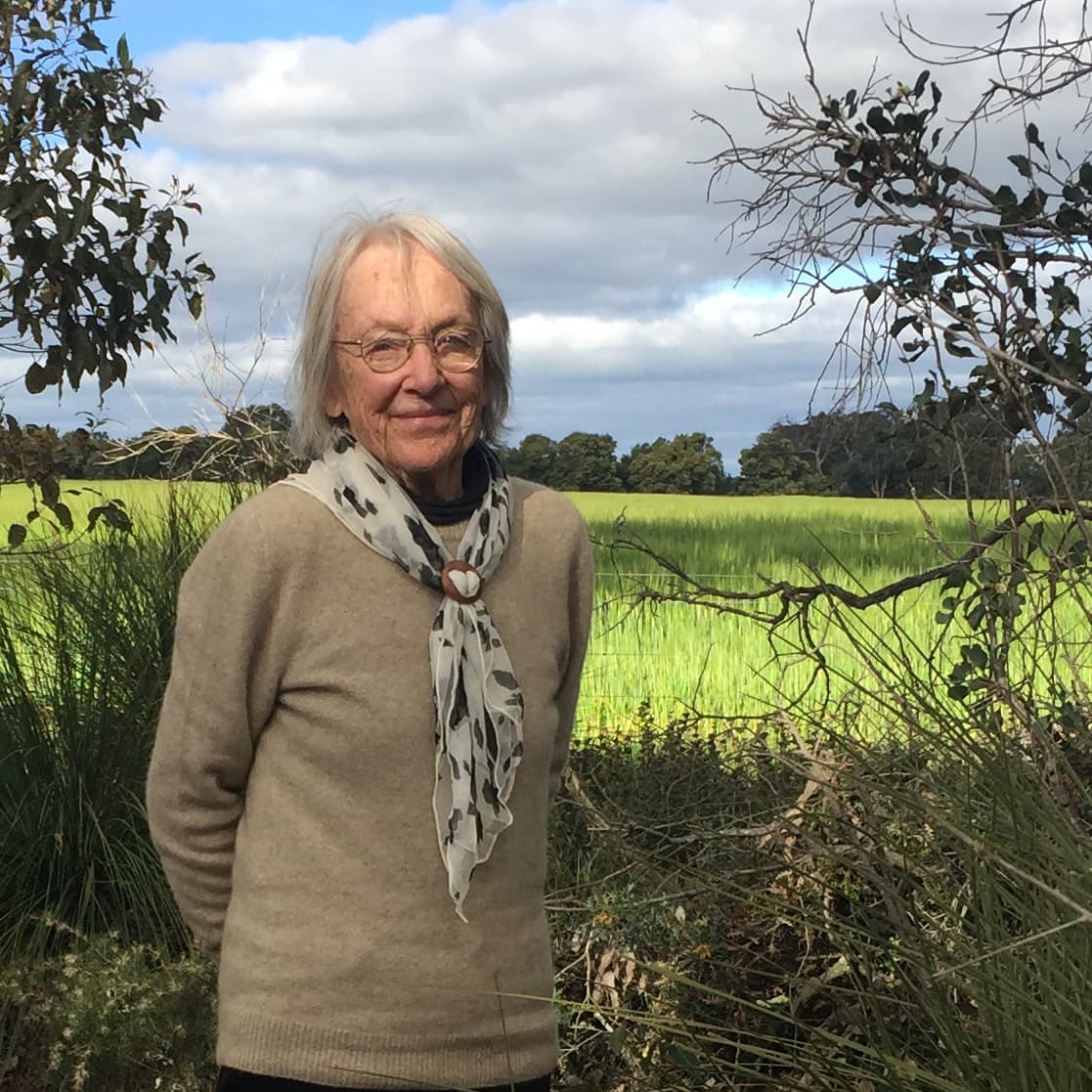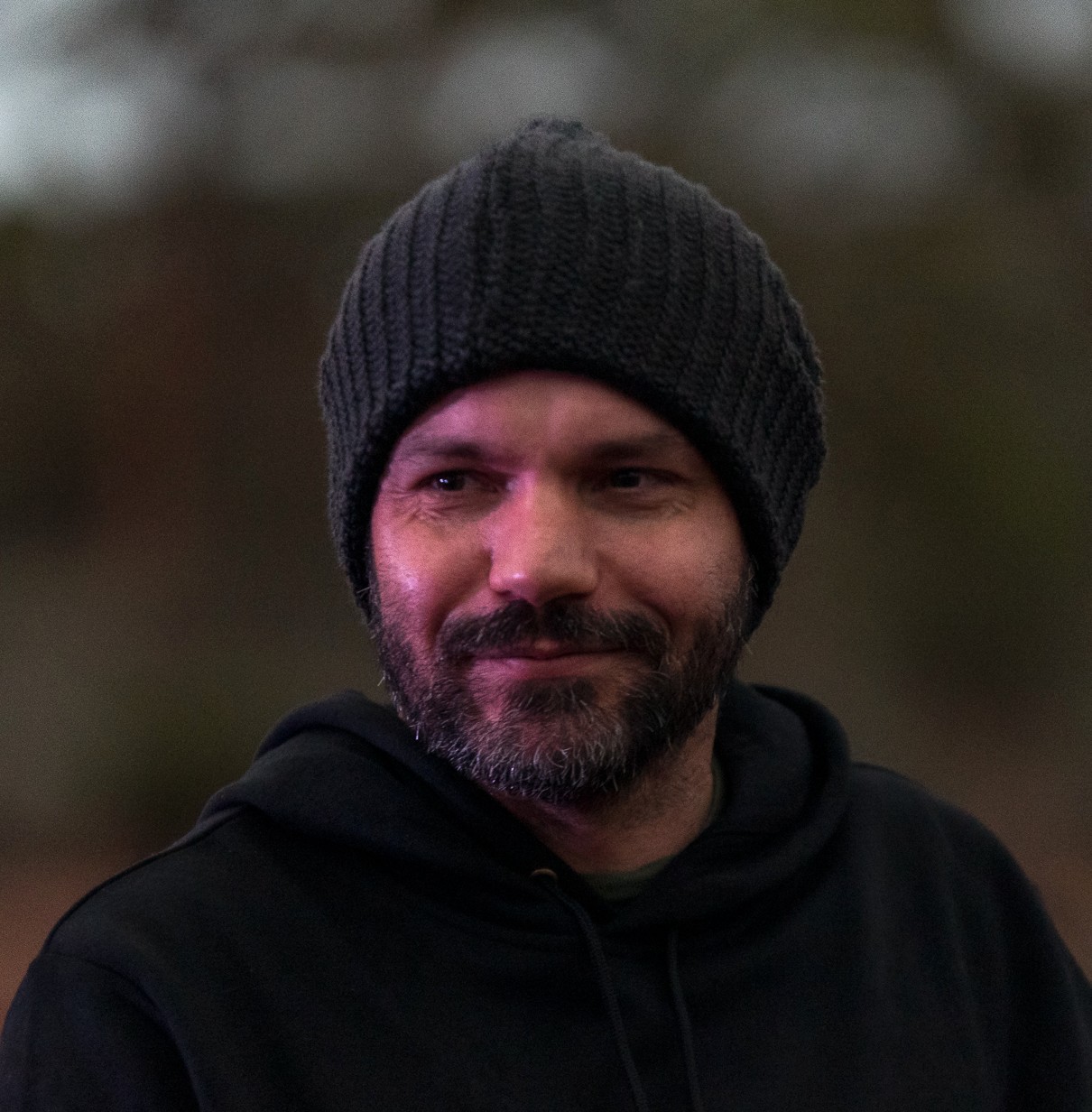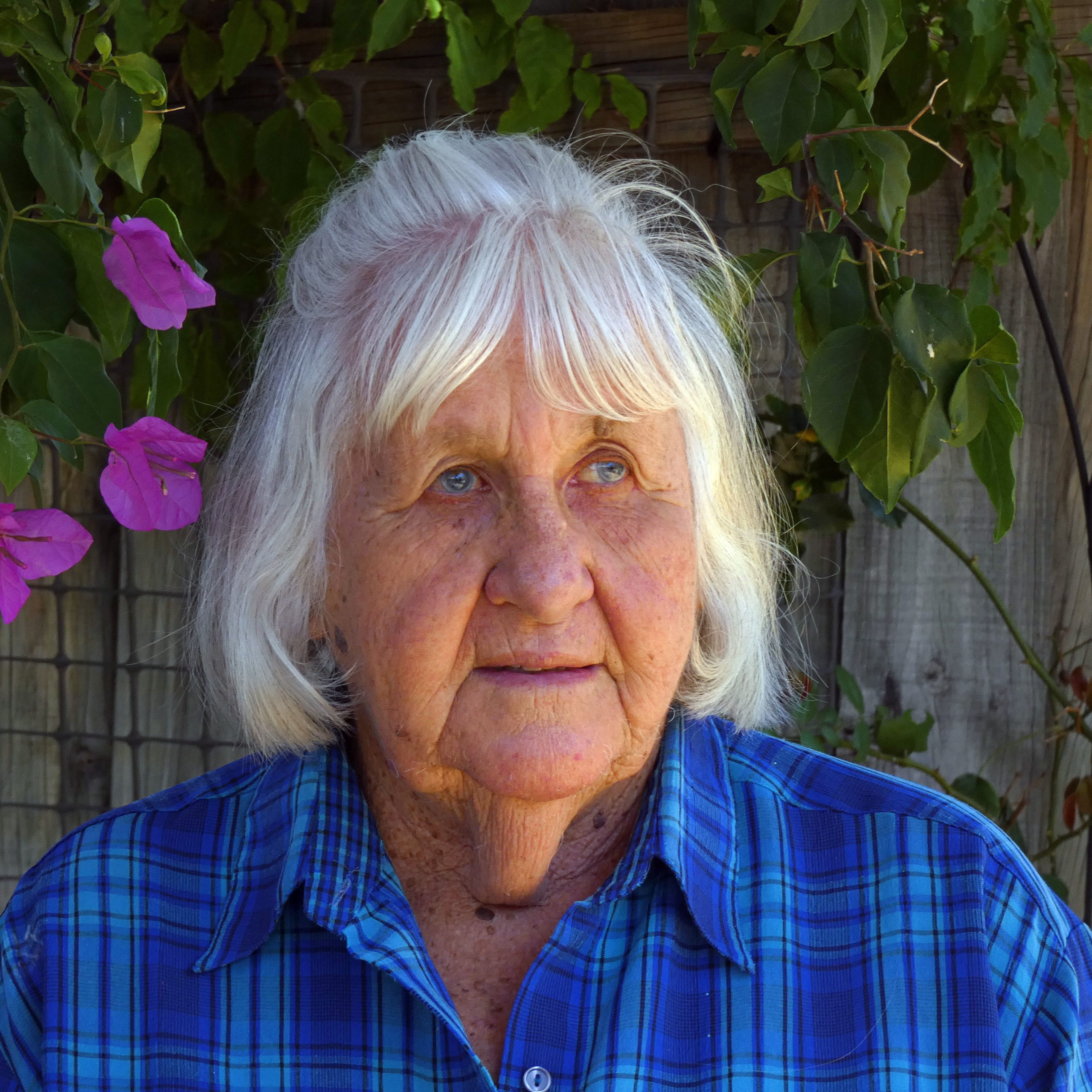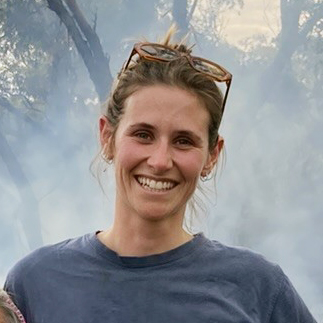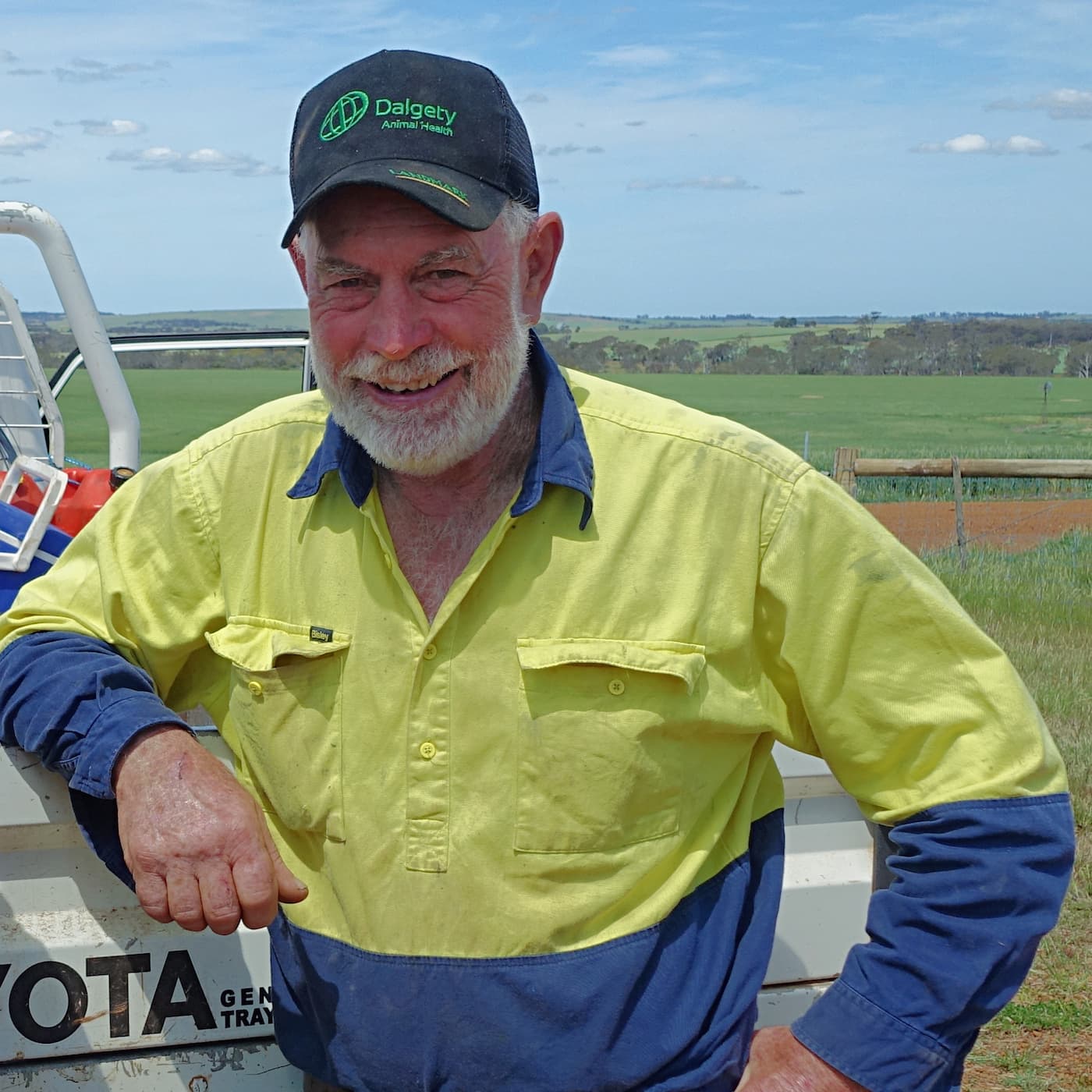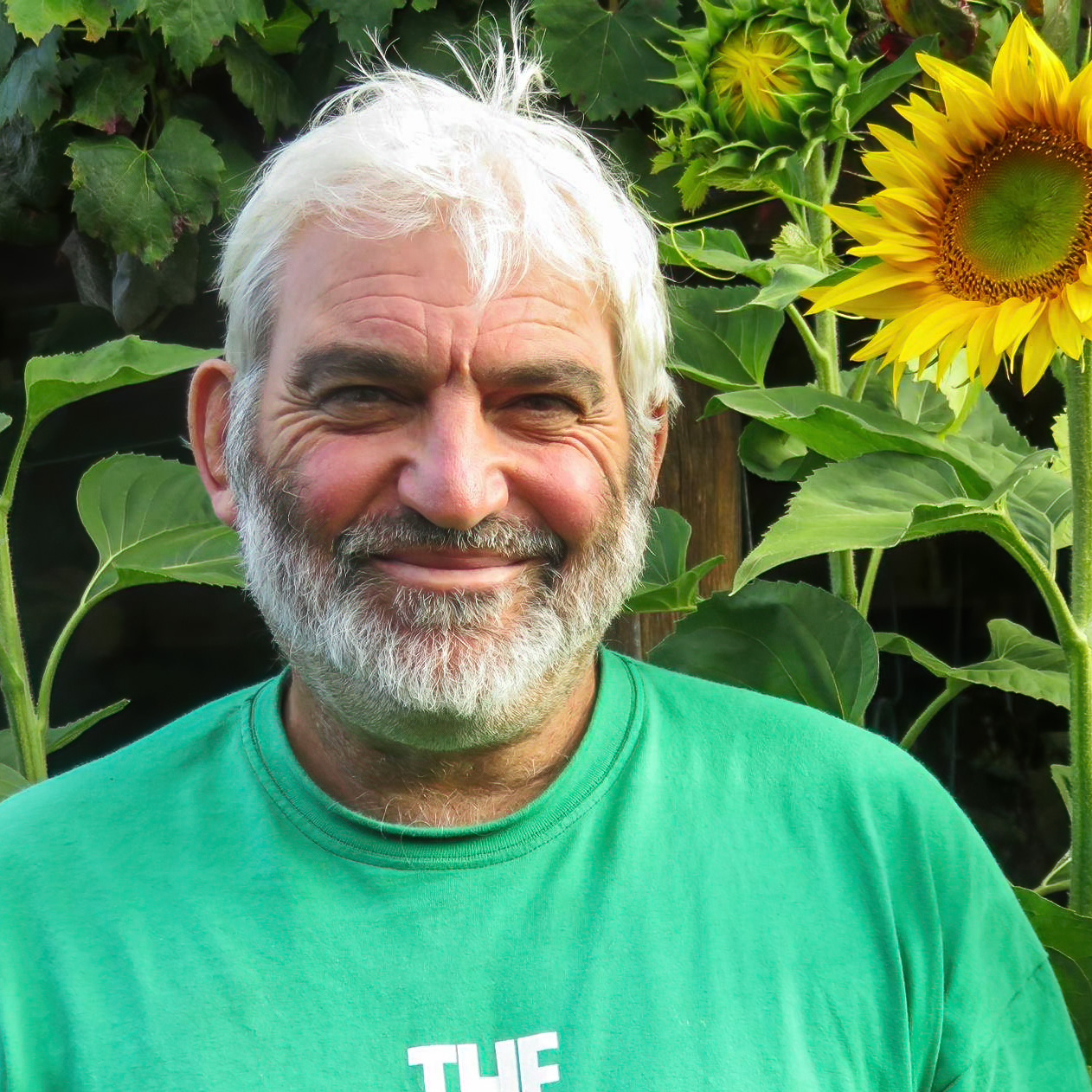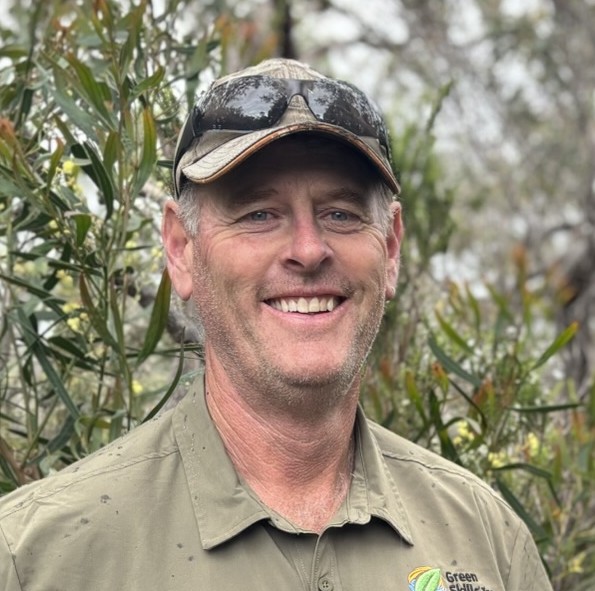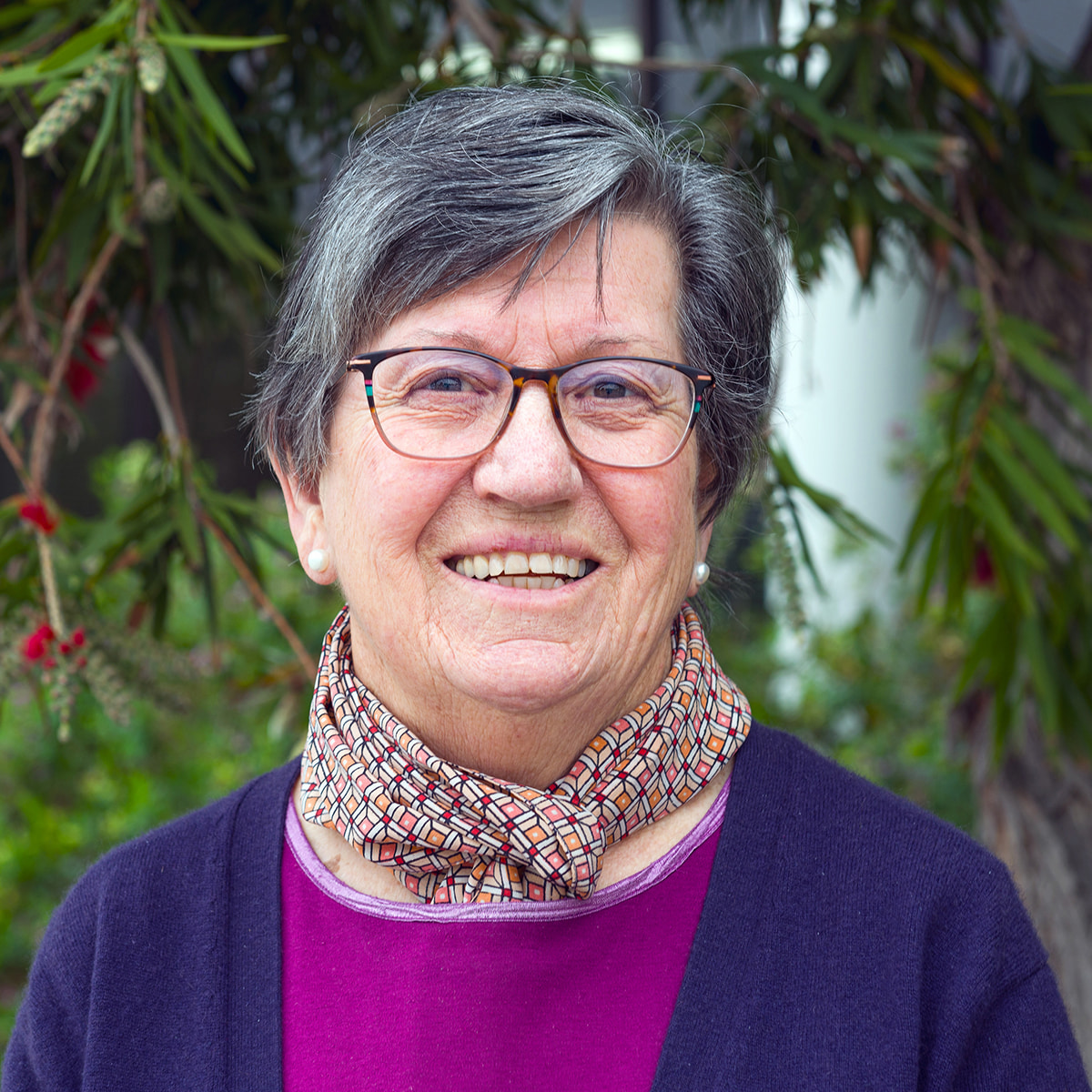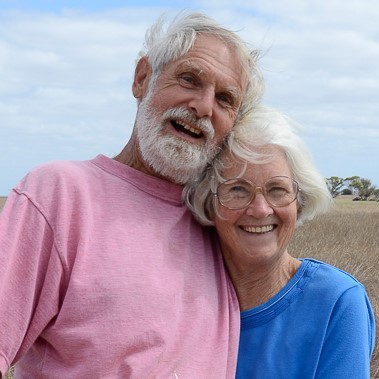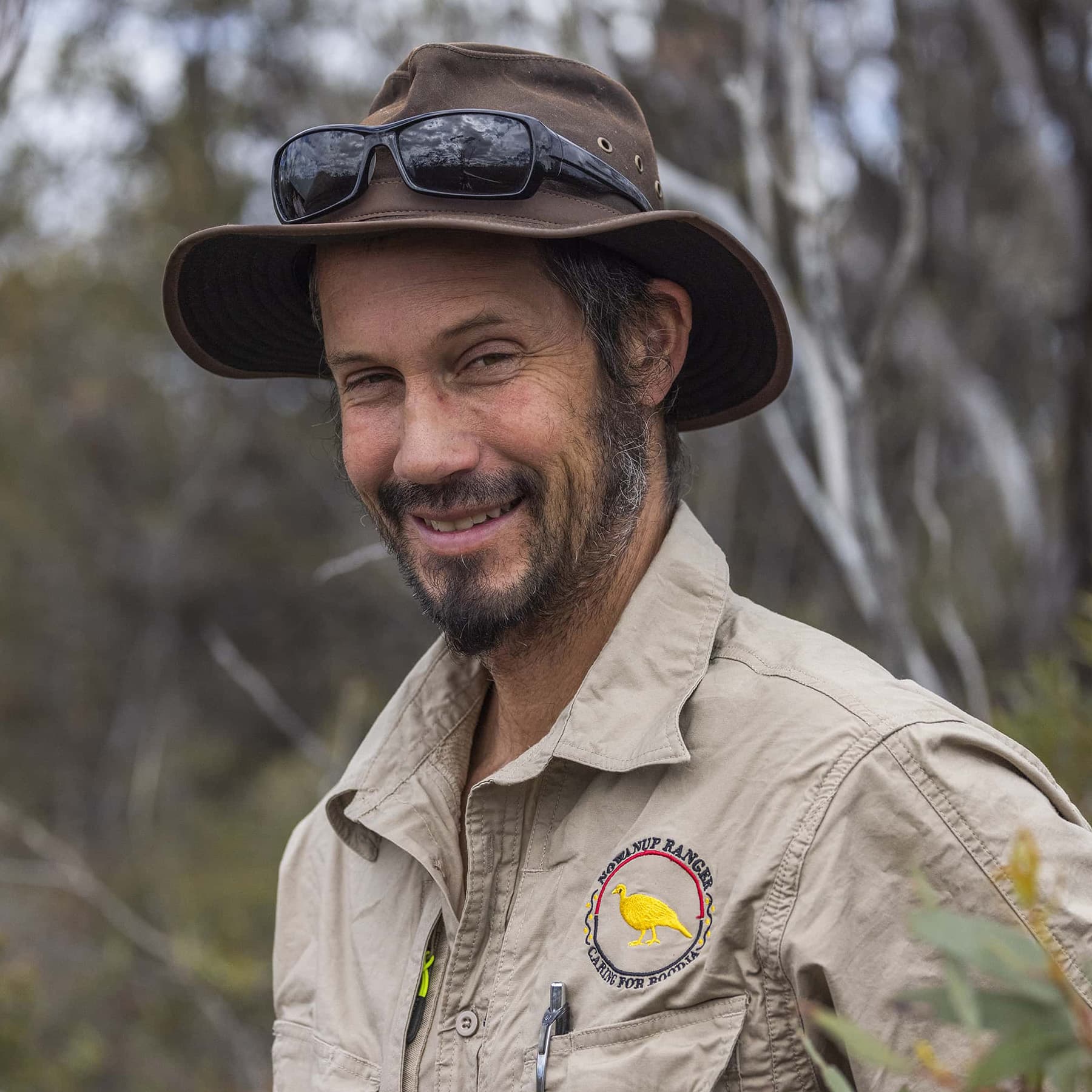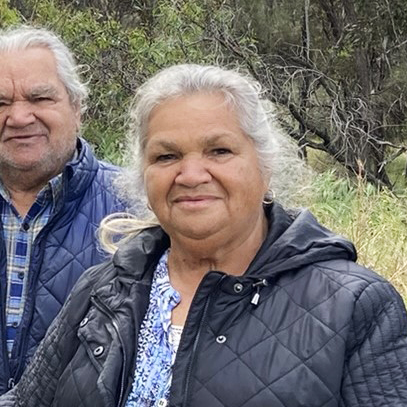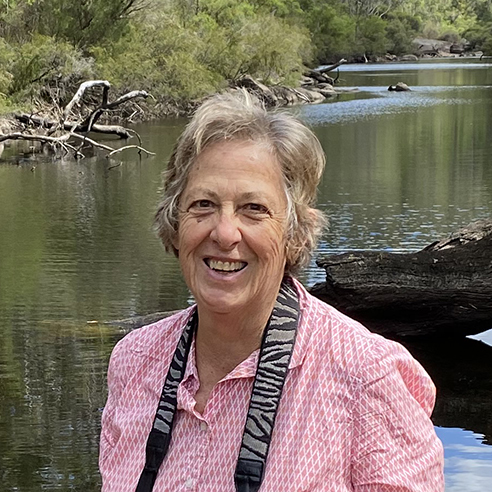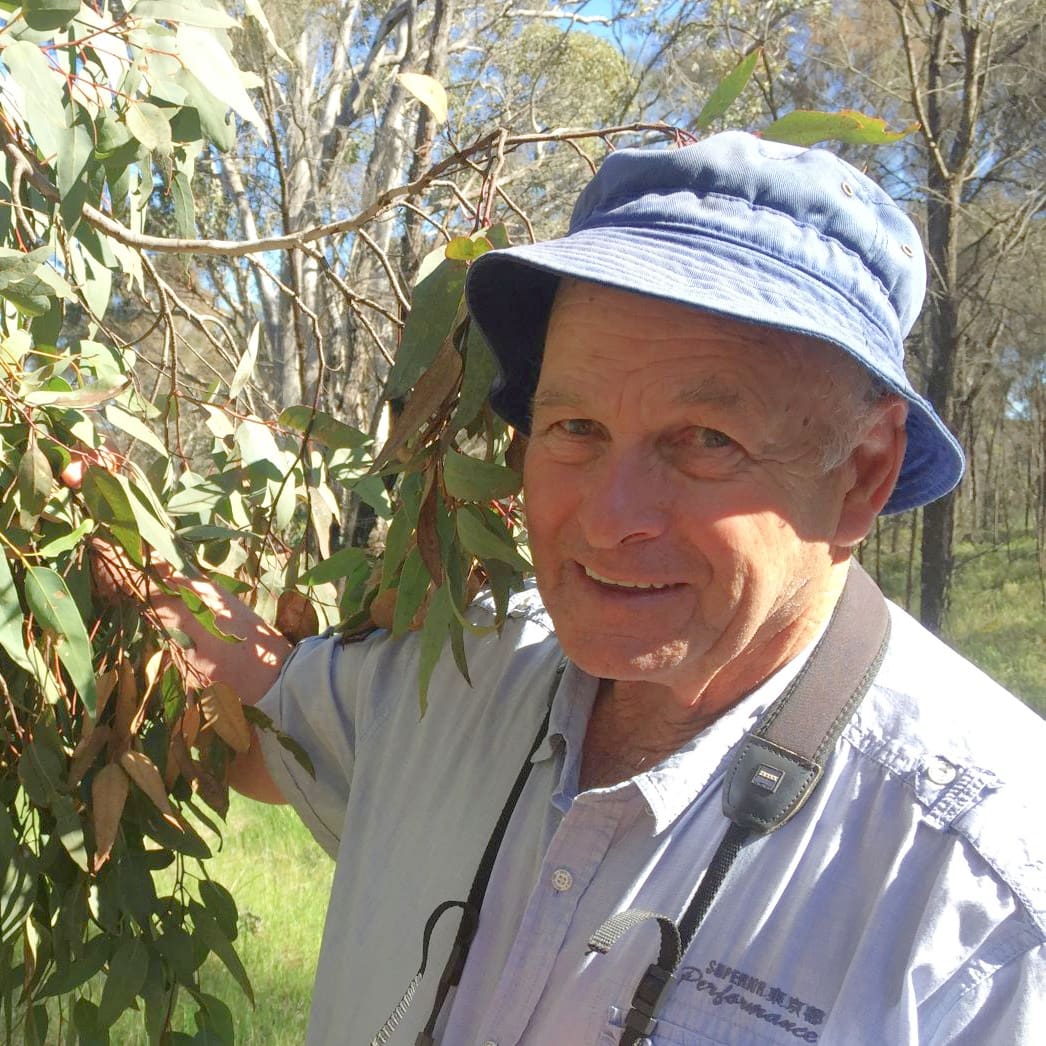Meet the storytellers
Community-based organisations, businesses and a wide array of individuals are driving an increase in ecological protection and restoration efforts across the Gondwana Link.
Indigenous Elders and rangers, landcarers, restoration ecologists, citizen scientists, conservation investors, artists and poets – to name just a few – are working for change.
They have in common a deep love for and knowledge of the natural world and a commitment to looking after Country.
It’s our great pleasure to bring you a selection of their stories, in their words.
Storytellers are listed alphabetically by last name.
Heather Adams
Farmer and Chair, Oyster Harbour Catchment Group
“You fence a bit here and you plant a few trees there and you think well how on earth is this going to make a difference in the longer term? But the thing is, over time, it all adds up and when everybody’s doing it suddenly you can’t go anywhere without seeing amazing work that’s been done over a long period of time that is making a fantastic difference.”
Prue Anderson
Businesswoman and President of the Walpole-Nornalup National Parks Association
“My home is close to the [Frankland] river and throughout my life I’ve spent many wonderful hours rock-hopping and swimming, paddling up and down, exploring, learning about the biodiversity along it and the creatures that live in it.”
Karlene Bain
Wildlife ecologist
“Deep in the shadows at the base of old rock cairns, where soft, damp soil weaves between the rocks, she lives in a burrow, large for her kind, like a doorway to another world. Around its rim, a delicate palisade of leaves, twigs, and silk rises like the turrets of a miniature castle.”
Anne Bondin
Convenor, Albany Bird Group; co-founder, Friends of the Western Ground Parrot
“Worryingly, they discovered that three of the very few locations where there had been relatively recent records of the parrots had since been cleared and turned into farmland.”
Keith Bradby
CEO, Gondwana Link Ltd
“With Gondwana Link, we decided right at the beginning that we had to look to the bush for our inspiration. We had to learn from the wisdom of the last 250 million years. And as a fundamental principle, try to ensure that the diversity of actions we were taking came close to reflecting the diversity of the bush and habitats and communities that we’re working across.”
Wendy Bradshaw
Landcarer and farmer, Tambellup
“The whole thing of farming is such a challenge of how you farm with nature. That’s always been my thing, trying to work out how we can do that more effectively. There’s so many ecological functions provided by biodiversity, like pollination and insect management, and recycling of nutrients.”
Natalie Cordon
Noongar Languages Teacher
“I think the kids find the Noongar language classes so interesting because of the connection. Noongar is Australian, it belongs to our area. It is part of where we actually live. I think that really excites them.”
Averil Dean
Menang Goreng Elder, Albany
“I had the privilege of being able to experience the spiritual strength of our old people who shared a strong connection to the land. Their spiritual strength shone through them with their relationship to nature and gave them the power to overcome adversity and go forward with pride in their cultural beliefs.”
Sayah Drummond
Vice Chair, Friends of Porongurup Range & Communications Officer with Oyster Harbour Catchment Group
“I am a ‘people person’, so working with the community and working with passionate people is just really energising. At university I found researching by myself and working in a laboratory quite tiring, but when I came home and went for walks in the bush and was around amazing, committed, knowledgeable people, I felt more hopeful and revitalised. Being with them, I’ve learned that a lot of environmental recovery is done by volunteers because they care, they make the effort to learn, and they truly make a difference to their little patch.”
Nic Dunlop
Citizen Science specialist, Conservation Council of WA
“So what we’re trying to do now is imagine a landscape where some of the original functionality is restored by reconnecting isolated bush areas and biodiversity through ecological plantings. This will improve the resilience of native plant and animal populations (their ability to cope with fire and drought), and enable farming to be more sustainable, such as through soil stability and the presence of more beneficial species.“
Aden Eades
Goreng-Menang Noongar Elder
“When we were young, our family ‒ Grandfather Eades and his sons ‒ worked on farms during the land clearing years, burning up and cutting down and dealing with fire all the time. We learnt the cultural side of fire from a very young age from my other grandfather, Pa Chris Penny, and Grandmother Agnes. We didn’t mess around with fire; you don’t do that. That’s wiirnitch. That’s bad to do that.”
Eugene Eades
Goreng Noongar Elder, Nowanup
“There’s a great energy out here within the land. Noongars call it mabarn. It’s a power, it’s an energy that was used to make unwell people well again, and seeing the people that come here to Nowanup, whether they’re non-Aboriginal and Aboriginal, always go away feeling much more better than they’ve come.”
Elizabeth Edmonds
Palaeoecologist, artist, gallery owner and curator
“On a cold wet wintry day in 1991, some university colleagues and I ventured out to extract cores of sediment from this small heavily vegetated lake. Wading up to our waists in icy water to retrieve over three metres of peat material and then getting it all back home for pollen analysis was an experience. But I was hooked!”
Ezzard Flowers
Goreng Noongar Elder, Gnowangerup
“When we talk about boodja, we respect boodja, because boodja to us is our Mother Earth, and her bloodline and her strength and what flowed through her sustained us as a people, a community, as a society. Even though you don’t see infrastructure like the Empire State Building or Sydney Harbour Bridge, our infrastructure in the bush. We take care of it, we protect it, we preserve it, why? Because it does the same for us.”
Friends of the Porongurup Range
Leading conservation group, Porongurup
“We like the idea that we are a little spot right here, but we actually fit into a bigger picture within the Ranges Link area and then within the Gondwana Link area as well. Because the things that we’re doing, we’re not just doing for ourselves here on Twin Creeks. We’re part of a much larger operation that’s happening. I think we’re pretty proud of that.” (Lucia Quearry, Chair)
Tony Friend
Wildlife Research Scientist
“They are just spectacular. I don’t think anyone can look at a numbat and not be impressed by them … Here’s this animal with vivid colours – reddish brown with black and white stripes and a black stripe through the eye. Although it seems hard to believe, I think their colour gives them camouflage. They are diurnal animals, which means they are active during the day, but in a dappled light, the numbat just disappears into the background.“
Nikki Green
Artist and educator
“I think a sense of place gives your life deeper meaning and informs your identity. A sense of place gives you purpose … It is that connection with people, connection with the environment and connection with yourself and feeling part of a community … I guess that’s why it is an important thing in my life to embrace and include people and offer opportunity, especially to connect through the arts.”
Gen Harvey
Landcarer, Wagin-Woodanilling Landcare Zone
“Around Woodanilling there is the wandoo woodlands, a threatened ecological community, and the salmon gum country – you don’t have to go much further east, where that’s all been cleared out for the big machinery. And for the phascogale, the little animal that we rant and rave about, this area is a sanctuary. This semi-arid zone is the only place left that they are found, after once being so widespread across Australia.”
Alan Hordacre
Forester and landcarer, Tenterden
“So what we’re trying to do now is imagine a landscape where functionality is restored, and connectivity is restored. We’re trying to imagine a system where farming can be more productive, but where biodiversity is reconnected across the landscape, and the resilience of plant and animal populations is improved.“
Pierre Horwitz
Professor of Environmental Sciences, Edith Cowan University
“The wetland was deep in the tingle forest–granite–wetland ecosystems north of Bow Bridge – a delightful swamp nestled in a broad valley, with deep peats, still spongy even though the surroundings were drying out as summer was taking hold.”
Monty House
Farmer, landcarer and Chair of Gillamii Centre
“I have a powerful vision for the farm. I’m working towards building a model of financial sustainability and environmental regeneration. This involves trying to find a good balance between doing the right thing by the land and maintaining our economic viability as a business.“
Justin Jonson
Restoration ecologist, Great Southern region
“This arid evergreen vegetation is amazing and it’s the complexity that actually drew me here. If you want to do restoration, it’s like anybody can fill out an easy crossword puzzle, but when the crossword puzzle gets challenging that’s when it becomes more interesting. Unpacking this flora, and the relationship between the soils and the plants and where they grow and what they grow with – that is a challenge that is exciting.”
Lynette Knapp
Merningar Noongar Elder, Albany
“When you look at mountains and hills – we call them Kaart. Our heads are kaart. So when we are on country we’re amongst kaart, amongst the great mountains. We know they’ve got eyes and ears. And they’re watching our every move, so we have to show those kaart special consideration. We have to respect them.”
Carly Le Cerf
Landscape painter, Kwoorabup/Denmark
“Carly was pleased to find the pink, sinewy Salmon Gums she had been longing for, their curved trunks and umbrella canopies glowing orange at the crown. A misty morning with sunlight at her back made painting those glowing trunks pure joy. Rotating her easel through Country, she painted amid a mosaic of burnt, regenerating, and old growth trees.”
Sylvia Leighton
Farmer, landcarer & scientist, Wellstead
“I think having worked in the environment for a long time, you just, you see the place of where humans fit into the web of life. And if we’re too destructive, nature will just flick us out sideways. So if we are more respectful and live a little bit more gently and respectfully, with all the other organisms around us, we may be able to move into the future.”
Chris Lewis
Wildflower enthusiast and botanical collector, Kojonup
“In Kojonup we don’t have the big fields of everlastings like up in the Murchison, but in a square metre, we can find you a dozen to two dozen different plant species.“
Peter Luscombe
Landcarer and farmer, Porongurup
“This area is one of the biodiversity hotspots. Just on one property you can have 700 species of plants growing naturally – that’s extreme. And you can’t help be sort of blown away by it if you know anything about plants at all.”
Ella Maessepp
Farmer & landcarer, Katanning Landcare
“Living in a community like Katanning, which is so engaged in landcare, I am continually buoyed by the number of farmers that are tree planting. They’re wanting to fence off their remnant vegetation, they are actively increasing the amount of perennial pastures in their farm systems, they are talking about soil carbon, carbon sequestration into their soil.”
Ian Maley
Conservationist, outdoor adventurer and businessman
“As the water widens out into an open reach, there is a temptation to relax, ship paddles, lean back and leave the canoe to lazily pirouette on a virtual plane of perfectly reflected forest. The valley and surrounding forest offer protection to the water surface from the indecisive winds of late winter and spring. It is easy to lapse into meditation under revolving branches overhead. “
Kath Mathwin
Wildflower enthusiast and botanical collector, Kojonup
“Everyone loves wildflowers to look at, to photograph or study. There is still a lot remaining to preserve and regenerate. Can the knowledge, appreciation, money, dedication and action be found to make it happen?”
Jean-Michel Maujean
Sound artist, Kwoorabup/Denmark
“Sonically, this was the most delicate of all five sites. The dawn chorus began with a thin, high shimmer of Honeyeaters and Grey Shrike-thrush before settling into the liquid, flute-like calls of the Golden Whistler (Western). It set the tone for the whole project: a reminder that restoration is as much about subtlety as spectacle.“
Brenda Newbey
Co-founder, Friends of the Western Ground Parrot; founding member, South Coast Threatened Birds Recovery Team
“My cold fingers weren’t up to the task, and the piece [of chocolate] fell on the floor. To find it, I got out of the sheltering car and that was when I heard a very clear ground parrot call. It was almost dark, two or three stars were out, and it was around 40 minutes after sunset.”
Carol Pettersen
Menang-Ngadju Elder, Albany
“The essential thing is the land, the Boodja. Because we’re on the Boodja, we’ve got our storylines, we’ve got the hills, we’ve got the rivers, we’ve got the flora, we’ve got the fauna. We teach with the totemic system, which is our religious belief. We then talk about the storylines with the hills, the creation of the landscape.”
Reneé Pettitt-Schipp
Poet and writer
“We’ve been taught to disconnect because places around us are being destroyed all the time. That’s traumatic. We see the natural world being destroyed, so we disconnect — we say, ‘That’s not me’. But then we disconnect from what brings us deep joy as well … I think we have to connect to country to start developing the will to help it.“
J Dale Roberts
Emeritus Professor and herpetologist
“Neobatrachus emerge after major rain events, prompting herpetologists like me to watch the weather closely. Long before the Internet, after I moved to Perth, I used to listen to the regional rainfall reports on the ABC Radio’s “Country Hour” every day. Twenty-five mm or more and a colleague or student and I were off: to the wheatbelt or, crazily, as far as Kalgoorlie and Menzies.“
Ursula Rodrigues
PhD student, University of WA
“Through the time I have spent with the Elders on Country yarning about fire, they have taught me that there is no distinction between campfires, which are the social centre of life, and small controlled burns used to clean up and care for Country.”
Tim Saggers
Landcarer and passionate environmentalist, Kalgan River valley
“You don’t go for a walk in this bush and not find something that you either haven’t seen before or didn’t expect to see there. It’s a very special and unique environment. The ecology of here we’re only just beginning to understand, the complexity of this ancient Gondwanaland flora, the complexity and the interrelations with invertebrates and other animals is just incredible.“
Basil Schur
Senior Project Manager, Green Skills
“I feel strongly that Balijup is not just a property where we are restoring the environment, it’s also a place of education. School groups visit, and our citizen science teams include university students doing environmental degrees, as well as TAFE students studying conservation land management. The work at Balijup provides these tertiary students with essential experience in working with wildlife. For me it’s fantastic to have a practical project where we can train the next generation to care for our environment.”
Peter Stewart
Green Skills, supervisor
“Let’s think about the volume of space taken up by weeds. We’ve all seen a humble dandelion in the garden or bush — it originates from Europe/Asia. Fully grown, it takes up about 0.1 metres (m) x 0.15 m x 0.3 m = 0.00045 cubic metres of space/volume. You may have also seen the small Pretty Sundew plants (Drosera pulchella), which are native to the south-west. The volume of one plant is 0.03 m x 0.03 m x 0.04 m = 0.000036 cubic metres. So, one introduced dandelion plant takes up the same volume as 12 native Pretty Sundews! Which plant would the community prefer to have?”
Katrina Syme
Botanical artist and fungi expert
“I enjoy the thrill of the hunt! I just grab my bucket, my waxed lunch wrap, some plastic containers, and my trusty truffle rake, then off I go to find fungi. I’ve made 3,234 fully documented collections so far, including a few bryophytes and lichens from expeditions in the rangelands.”
Bill and Jane Thompson
Conservation landholders, Fitz-Stirling region
“Jane and I always wanted to be active participants in a large conservation project… and in a rush of blood purchased “Yarraweyah Falls” in the heart of the Fitz-Stirling. This region of Western Australia is amazingly diverse. If you include our Bush Heritage neighbours’ properties, there are over 900 native species identified so far.”
Jim Underwood
Nowanup Project Coordinator, Gondwana Link Ltd
“Traditional ignition methods were used with dried bushes, along with modern drip torches where needed. Aunty Eliza said she and Aunty Annette “felt like little girls again — how happy we were, rekindling the old practices that our parents and old people used to do.”
Eddy and Donna Wajon
Conservation landowners, Boxwood Hill
“So we were very interested in properties that were threatened, that were biologically diverse, that could be cleared at any time, or had been cleared before, and could be again… This property is an attempt from us to hold the bulwark, and to set an example for other people that in fact it can be done, you can do something, and it isn’t difficult, but you have to want to do it.”
Elizabeth Woods
Goreng-Menang Noongar Elder
“The burns were quite moving. It really does take you back. Even though the methods are a little bit different, the principles and the purpose behind it are the same. We don’t burn because we want to have fun or make smoke. There must be a purpose behind everything you do in the bush. We don’t just go out there so that someone can get a certificate saying they dealt with fire. It’s more than that.”
Joanna Young
Member of The Leeuwin Group
“I firmly believe that the methods of prescribed burning need urgent, expert, independent review. This review needs to include an assessment of the scientific evidence associated with prescribed burning. Fire prescriptions must be adapted for drying times and the voices of local communities should be heard. Government agencies tend to come up with blanket approaches which I believe are compromising the great biodiversity of the lands being managed. I am motivated to speak out because I have visited far too many areas where prescribed fires have left scenes no different from those after wildfires. We need to burn with care.”
Wayne Zadow
Farmer, birdwatcher and guide, Kojonup
“Over my birdwatching years, I’ve seen how nature all joins and works together to provide good habitat. When you see birds breeding it means the conditions in that habitat are right for them.”


